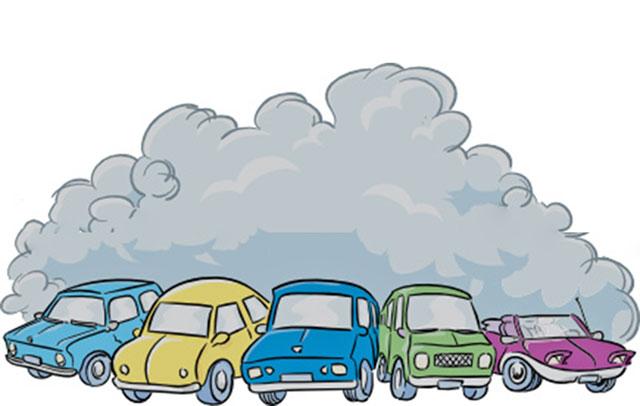You are here
Even low levels of traffic air pollution tied to structural heart damage
By Reuters - Sep 15,2018 - Last updated at Sep 15,2018

Photo courtesy of wordpress.com
People exposed to even low levels of air pollution are more likely to develop structural changes in the heart that can be a precursor to heart failure, a UK study suggests.
While exposure to air pollution has long been linked to an increased risk of heart attacks and strokes, less is known about how pollutants might alter the structure and function of the heart, the study team writes in Circulation.
Researchers looked at data on exposure to traffic-related air pollution and results from heart MRIs for 3,920 adults who did not have cardiovascular disease. They found that previous exposure to tiny particles known as PM2.5, which include dust, dirt, soot and smoke and to nitrogen dioxide, a poisonous gas in car exhaust, were associated with enlargement on both sides of the heart.
“Air pollution appears to be damaging for cardiovascular health even at a relatively low exposure level,” said lead study author Nay Aung of Queen Mary University of London.
Individuals exposed to higher level of air pollutants were more likely to have larger cardiac ventricles (main pumping chambers) after accounting for potential factors that can independently influence the size of these chambers, Aung said by e-mail.
“This is important because these observed changes in the heart were similar to the patterns seen in heart failure development,” Aung said.
To assess exposure to traffic fumes, researchers examined data on average annual air pollution levels at participants’ home addresses at the start of the study.
Half of the participants were exposed to average annual concentrations of less than 9.9 microgrammes of PM2.5 particles per cubic metre of air (ug/m3) and 28.2 ug/m3 of nitrogen dioxide.
For fine particulate matter, that is well within UK guidelines limiting average exposure to no more than 25 ug/m3 of PM2.5, although the World Health Organisation (WHO) has said there are no safe limits for PM2.5 exposure, Aung and colleagues note in Circulation.
Researchers measured participants’ heart structure with MRIs a median of 5.2 years after assessing their air pollution exposure.
For every extra 1 ug/m3 of PM2.5 and every additional 10 ug/m3 of nitrogen dioxide people were exposed to near their homes, their hearts were enlarged by approximately 1 per cent, the study found.
The type of enlargement seen in the study is a “well-recognised... adaptation heralding heart failure development”, the authors note.
Heart failure happens when the heart muscle is too weak to pump enough blood through the body. Symptoms can include fatigue, weight gain from fluid retention, shortness of breath and coughing or wheezing. Medications can help strengthen the heart and minimise fluid build up in the body.
The study was not a controlled experiment designed to prove whether or how air pollution might directly cause enlargement in the heart.
It is possible that when people inhale polluted air it causes inflammation in the lungs and blood vessels and fine particulate matter enters the bloodstream, said Benjamin Horne, director of cardiovascular and genetic epidemiology at Intermountain Medical Centre Heart Institute in Salt Lake City, Utah.
This can overwork the heart, Horne, who was not involved in the study, said by e-mail.
“Even people who are free from cardiovascular disease may, over time, develop diseases due to chronic exposure to air pollution,” Horne said.
Related Articles
Women who breathe polluted air during pregnancy may be more likely to have children who develop high blood pressure, a US study suggests.Res
PARIS — Nearly 90 per cent of the 200 cities beset by the world’s highest levels of deadly micro-pollution are in China and India, with most
NEW YORK — Air pollution, but not traffic noise, appears to be linked to an increased risk of having low-birth-weight babies, reports a new


















